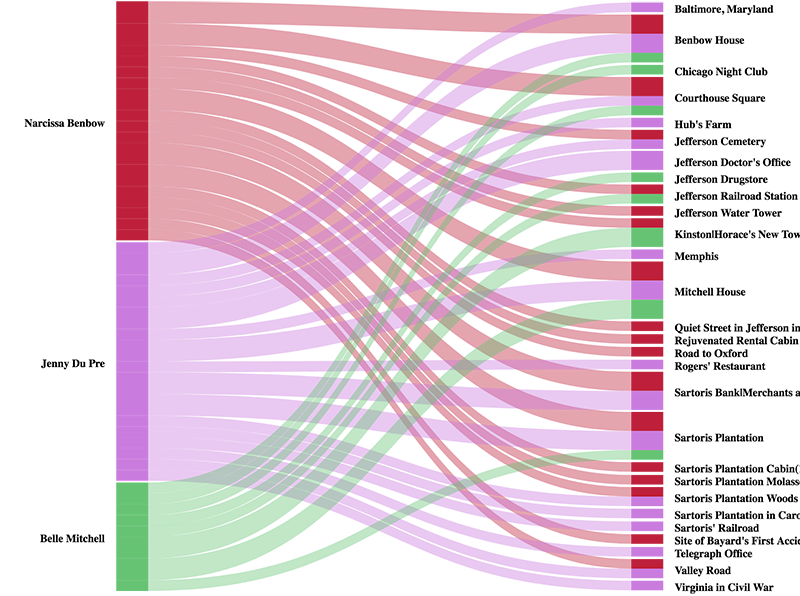Riemann Essay
| CLOSE WINDOW |

|
University of Virginia |
|
Question: During one of our earliest classes we discussed the role that women play in Faulkner's works. Is there a way to use DY to see how often women have their own narrative, or even a stream of consciousness narrative? What I Did: Using the Characters Search tab on DY (http://faulkner.iath.virginia.edu/characters.html), I selected for "women" and "first person narration" to see if there were any results. Unfortunately, nothing came up (I was hopeful that there might be some examples in later books to use in a larger paper). My next step was to select for "women" and "stream of consciousness." This search, fortunately, yielded more results, though again not as many as I was hopeful for.  My next question was where women appear in the works we've read. Using the Visualizations tab on DY I selected a bipartite graph mapping characters against location (http://faulkner.iath.virginia.edu/characters-bipart.html?text_na=FD). Selecting text by text and filtering by major female characters, I graphed where women appear in the Faulkner works we've read so far.      Interpretive Conclusions: What most interested me was the difference between women that were merely mentioned in their novels and women that were given their own agency through a narrative voice. The only novel thus far (as it seems at all) of Faulkner's that we've read that allows women their own narration is As I Lay Dying. DY allowed me to see which locations these women appeared in. My initial assumption was that women would tend to be found more often in domestic settings, and as demonstrated by the majority of the above graphs, most women are. When women are allowed to narrate their own story, however, the graphs show that in As I Lay Dying the women are more often in open and more natural settings. If I had the ability in visualizations character-location graph to narrow my search by narration style, I think that might yield interesting results for characters overall, not women alone. Citing this source: |
